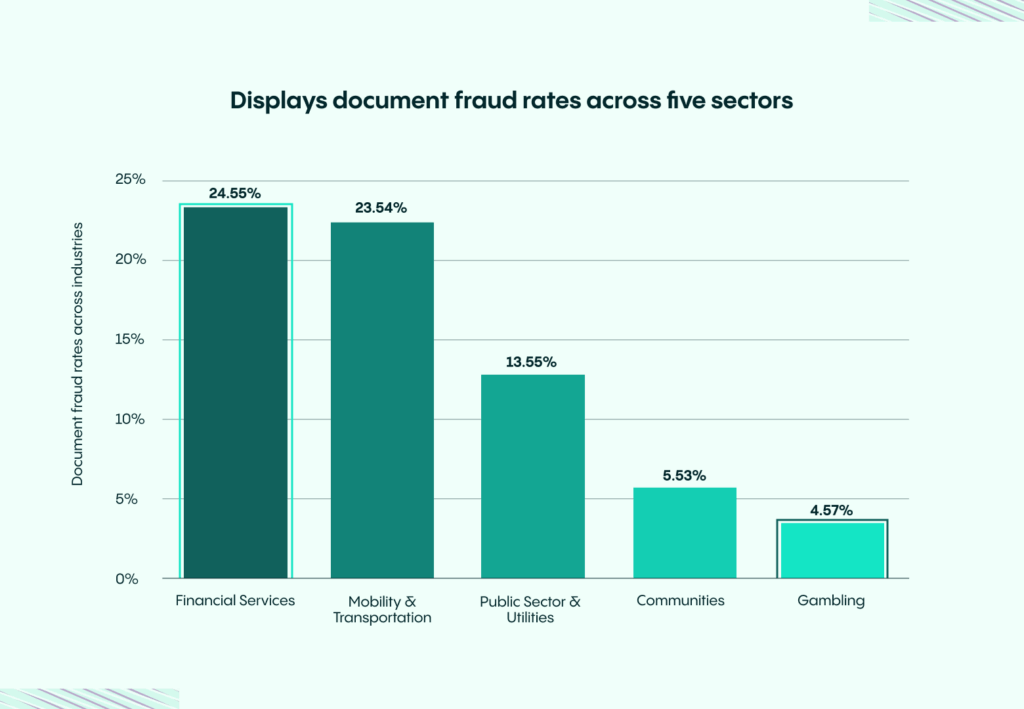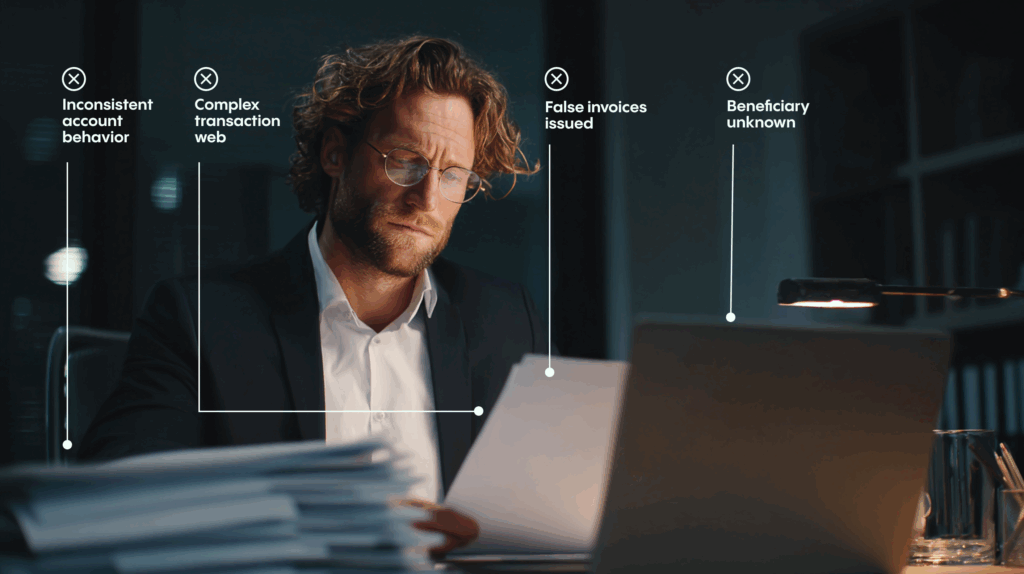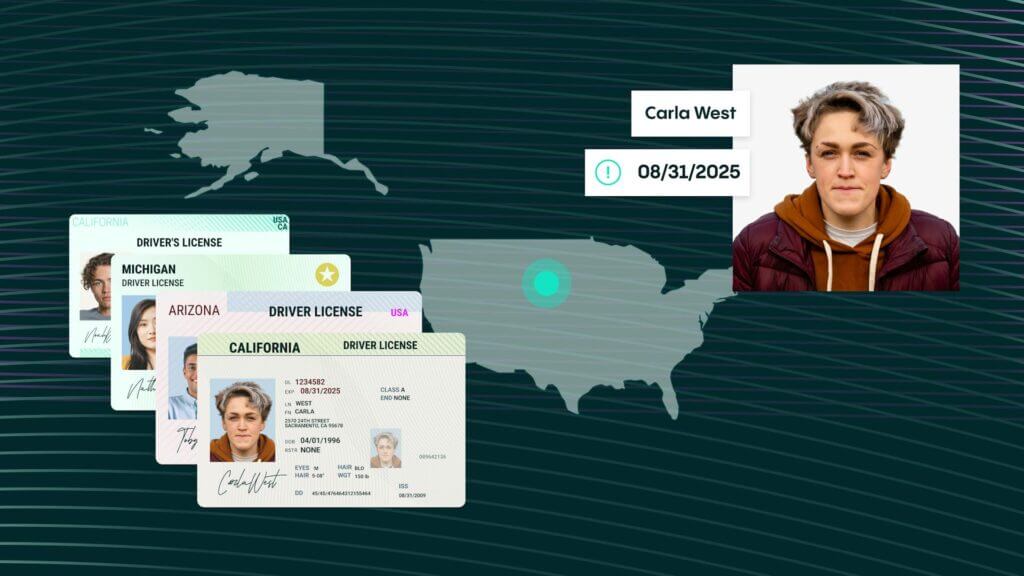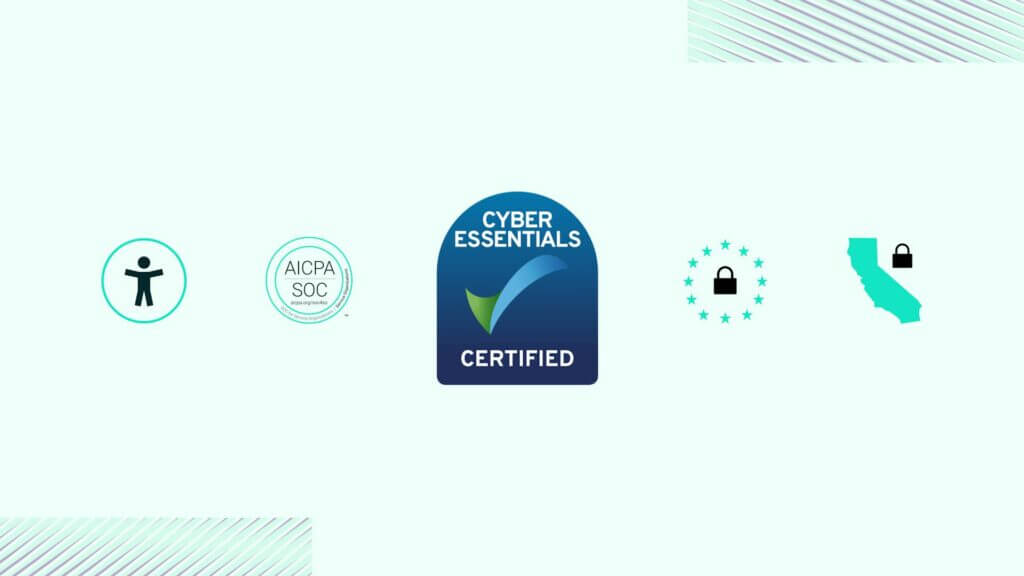Blog Post
Understanding the rise of fake ID usage
Fake IDs are more common than you might think. The latest fake ID statistics available show that 14,000 fake IDs were seized in the state of Cincinnati alone in 2020. However, fake IDs aren’t just a US-based issue. In the UK, estimates suggest that more than 2,000 fake IDs are presented to Border Force staff every year.

The use of tampered or counterfeit identity documents is a widespread and growing problem that affects individuals, businesses, and institutions globally. It spans low‑impact incidents such as friendly fraud—for example, someone obtaining an extra in‑game credit by submitting a tampered document—to large‑scale financial fraud that can cost organizations and consumers millions; consumers reported over $12.5 billion in fraud losses in 2024, and industry surveys show average organizational losses in the hundreds of thousands to millions per incident. At the same time, widely available LLM and generative‑AI tools make it far easier for fraudsters to produce high‑quality counterfeit documents and supporting materials from scratch in seconds, contributing to a sharp rise in digitally forged documents.
Document fraud insights by sector & state
In our recent analysis of U.S. document‑fraud trends, we examined which sectors and states bear the greatest exposure using Veriff’s 2025 dataset, which includes millions of sessions that were flagged and declined for document tampering. Below we present document‑fraud rates by sector (Graph 1) and a detailed state‑level breakdown (Graph 2).

Graph 1. Displays document fraud rates accross five sectors
- Insight: The sector breakdown shows Financial Services (24.55%) and Mobility & Transportation (23.54%) carry the highest exposure to tampered or counterfeit identity documents, indicating attackers are focusing on high‑value transactional flows where successful fraud produces outsized financial or operational returns. Given widespread fraud losses and the rapid rise of generative‑AI tools that accelerate realistic forgeries, these industries should urgently prioritize layered verification, real‑time risk signals and stricter controls to reduce financial impact.

Graph 2. Shows document fraud rates for driver´s licenses and passports accross various states.
- Insight: The elevated driver’s‑license tampering rates in states like New York (25.09%), North Dakota (24.42%) and Texas (24.2%) indicate regional hotspots where differing state issuance standards and security features enlarge the attack surface, allowing fraudsters to “shop” for various templates and scale attacks across many state variations. By contrast, the lower passport tampering rate (17.02%) aligns with stronger centralized security controls that make large‑scale counterfeiting harder, but widespread generative‑AI/LLM tools are rapidly lowering the barrier to produce convincing counterfeit documents and supporting artifacts in seconds, accelerating attempts against both state IDs and passports.
What is a fake ID? Definitions and types
A fake ID is a falsified identity document created to impersonate or closely mimic an official government‑issued ID with the intent to deceive people, systems, or processes.
- Altered (tampered) IDs: a genuine government‑issued document whose visible fields or photo have been physically modified while some original security features remain intact.
- SyntheticIDs: a document created from scratch using fabricated personal data and, often, a fabricated or improvised template (may include fully synthetic identities).
- Counterfeit IDs:
a reproduced document intended to closely emulate an authentic ID, including simulated holograms, printing effects and substrate look‑alikes.
Understanding these variations is essential because it enables precise detection, tailored solutions and targeted controls that reduce financial and operational losses amid rising reported fraud and a surge in AI‑driven document forgeries.
How to spot a fake ID: State-level insights
According to Veriff’s guide on spotting fake IDs by state, common indicators of fake IDs include:
- Misspellings or grammatical errors on the ID
- Incorrect fonts, spacing, or alignment
- Altered holograms or missing microprinting
- Inconsistencies in personal information (e.g., birth dates, addresses)
- Photo inconsistencies or signs of a photo swap (edge artifacts, misaligned portrait)
- Image and metadata artifacts that indicate digital manipulation
Insight: When designing controls, businesses must combine visual and forensic indicators with state‑specific document templates and issuance differences — and prioritize remediation and monitoring in high‑fraud states (e.g., New York, Texas) based on absolute volume and business impact. This is essential because generative‑AI tools and evolving attacker techniques are rapidly increasing the variety and quality of counterfeit documents, so templates and risk models must be continuously updated and adapted.
Motivations behind fake ID usage
Understanding the motivations behind fake ID use helps prioritize detection and prevention strategies. Primary motivations for using fake IDs:
- Underage access — obtain alcohol, enter bars/clubs/casinos, or access age‑restricted services.
- Lack of valid ID — people without any government ID use fakes to access services that require identification.
- Employment and credentials fraud — gain hire, bypass background checks, or access restricted worksites.
- Financial and account fraud — open bank/credit accounts, apply for loans, or execute identity‑theft schemes.
- Anonymity or evasion — avoid law‑enforcement, debt collection, or sanctions; conceal real identity for privacy or illicit activity.
- Cross‑border or travel misuse — bypass immigration/visa checks or disguise travel history.
- Social and peer pressure / convenience — social acceptance, convenience, or to appear older for dating, travel, or events.
- Organized or scalable fraud — criminal groups produce high‑quality IDs for resale or to support larger fraud operations.
Addressing these motivations with targeted controls (age verification, stronger identity checks for financial/employment use) reduces fraud and operational risk.
The role of technology and online marketplaces
Technology and online marketplaces have drastically lowered the barriers to produce, distribute, and scale fake IDs, increasing both their sophistication and reach.
- Production tools: generative‑AI image and text models, ready‑made state template libraries, high‑quality home/industrial printers and laminators let attackers create visually convincing forgeries quickly.
- Distribution channels: mainstream marketplaces, chat apps and darknet markets provide easy storefronts, payment and shipping options for buyer–seller workflows.
- Data and automation: breached PII, synthetic‑identity tooling and automated systems let criminals assemble realistic identities and operate at scale with low marginal cost.

Consequences of fake IDs and document fraud
Consequences of fake IDs produce measurable economic harm, enable identity‑and‑financial crimes, strain investigators and employers, and expose users to criminal prosecution.
- Economic losses: businesses incur direct fraud costs (chargebacks, reimbursement, investigation) and indirect costs (reputational and compliance)
- Identity & financial crime: counterfeit/tampered IDs facilitate account takeovers, synthetic‑identity schemes and loan or benefits fraud
- Strain on enforcement and workplaces: investigations and remediation divert law‑enforcement and operational resources, and fake IDs enable infiltration of high‑risk job sites or criminal networks
- Legal and personal risk: possessors or producers of fake IDs face arrest, prosecution and long‑term consequences (criminal records, immigration impacts)
Detection and prevention
Businesses should adopt a layered approach—maintain up‑to‑date state‑specific template database and combine visual/forensic checks (UV/substrate/hologram), ML‑driven anomaly detection, device/network fingerprinting, human review, and marketplace monitoring—to detect, triage and disrupt organized document‑fraud operations.
Prioritize these controls in high‑fraud states and sectors, escalate clustered or high‑value cases for manual forensics, and continuously update defenses as attacker tools (including AI‑driven document generators) evolve.
The future: Digital IDs and evolving security measures
Expect attackers to increasingly leverage generative‑AI, ready‑made template libraries and online marketplaces to scale both high‑quality physical forgeries and digital deepfakes, exploiting state‑by‑state template variation and the rise of fake digital IDs in online transactions.
At the same time, wider adoption of digital IDs incorporating biometrics, blockchain, and smartphone integration as well as multi‑layered verification (biometrics and device/network telemetry) will raise the cost of fraud—but defenders must continuously update controls as attacker tools evolve.
Conclusion
Understanding the statistics, underlying motivations, and technological enablers of fake‑ID and document fraud is essential for designing effective, proportionate defenses. Integrating state‑specific detection insights and targeted prevention empowers organizations, governments, and individuals to reduce fraud and protect society.














